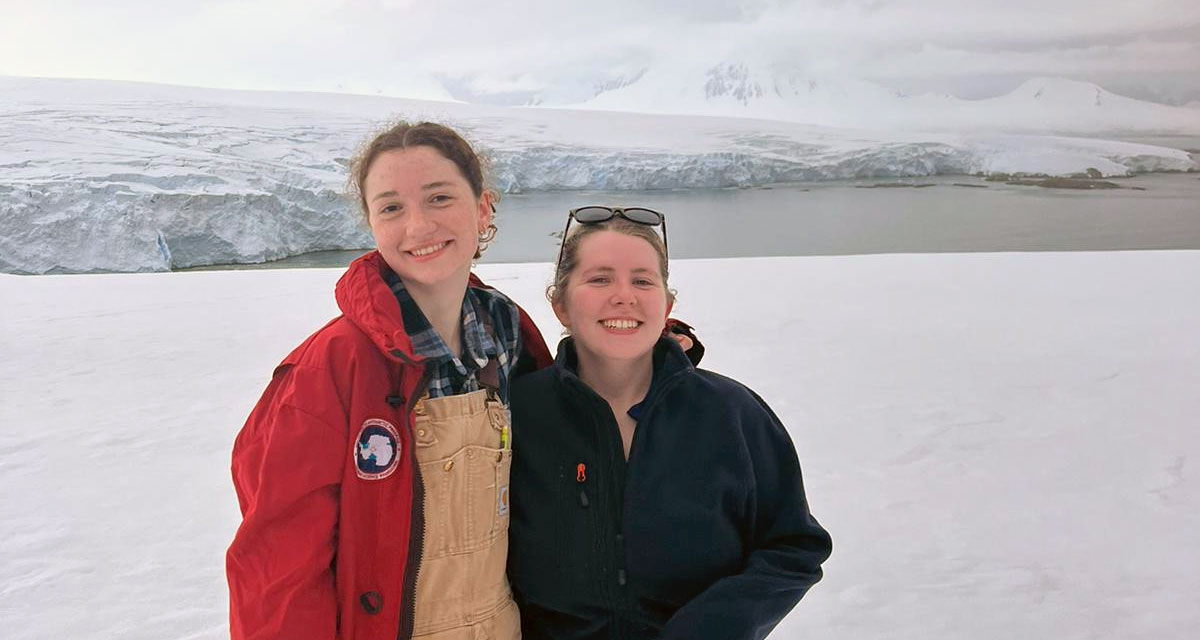- Details
- Written by: Chuck Amsler
Last week we had the opportunity to go on a ‘dive trip’ beyond our normal boating and diving range. We usually dive from open, Zodiac boats as you’ve read about in other posts, and we don’t go out of what is referred to as the “local” boating area. That is within a radius of two to three miles from the station. A main reason for staying relatively close is because if a diver somehow had a bad leak in their dry suit (unlikely, but not impossible) going much further would make for a very cold ride home.
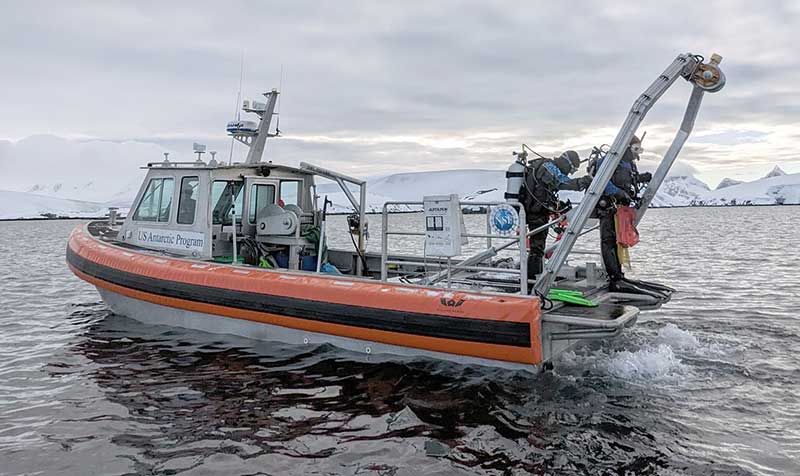
- Details
- Written by: Hannah Oswalt
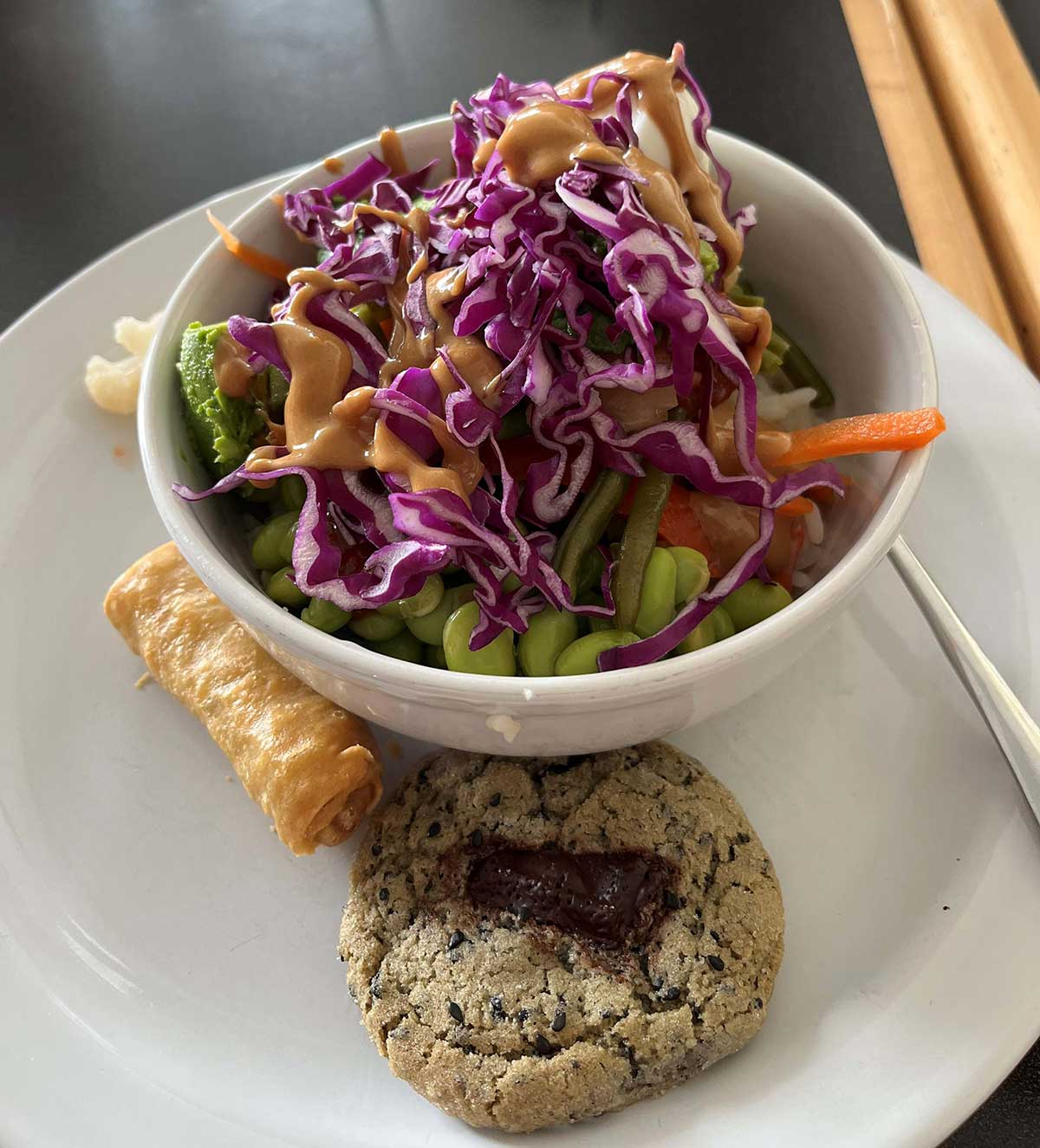 Antarctica is renowned for its isolation from the rest of the world. There are no cities on the continent. No homes, no businesses, and, most importantly, no grocery stores. This can become a problem when you are trying to feed forty-five people on station, and the closest grocery store is days away.
Antarctica is renowned for its isolation from the rest of the world. There are no cities on the continent. No homes, no businesses, and, most importantly, no grocery stores. This can become a problem when you are trying to feed forty-five people on station, and the closest grocery store is days away.
- Details
- Written by: Maggie Amsler
I have been doing a lot of diving lately. Most of my underwater excursions (6 in the last 4 days!) have included videotaping the lovely communities living on the seafloor in the waters around the station. Much of what we see is permanently attached to large rocks so we cannot collect them to live temporarily in the station’s sorting table. For today’s episode of All Creatures I will use scene grabs from the videos to introduce you to creatures that are fixed in place. Read on to ‘be at home’ with these homebody critters.
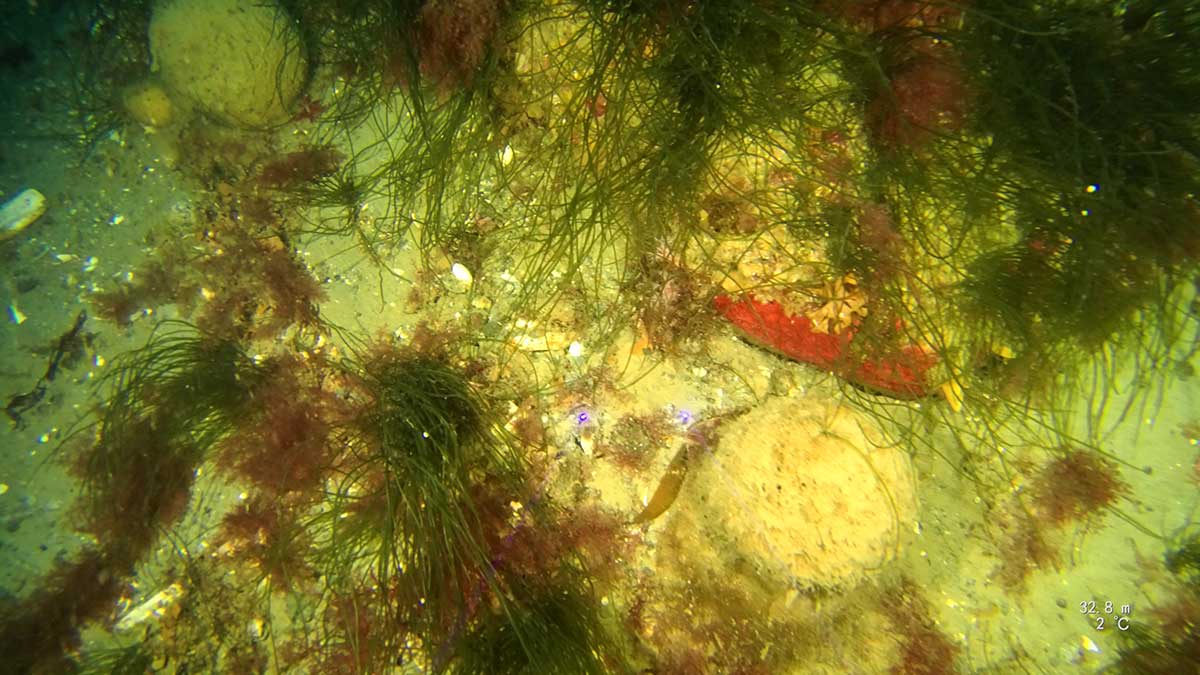
- Details
- Written by: Addie Knight
The time came for me to pack up my belongings and head back home. Leaving station, I had lots of mixed feelings. I’d made so many great friends who I knew I wouldn’t be able to see nearly as often, and I was sad to leave the beautiful ecosystem I’ve gotten to know over the past few months behind. However, I was also really missing my friends and family in Alabama and was excited to get back. As the ship got loaded up and ready to leave, I shared emotional goodbyes with all my friends, including Hannah, Jami, Chuck, and Maggie, who are staying on station to continue the experiment. I stalled for as long as possible before finally boarding the LMG and waving to Palmer Station as we pulled off the pier and into the Southern Ocean.
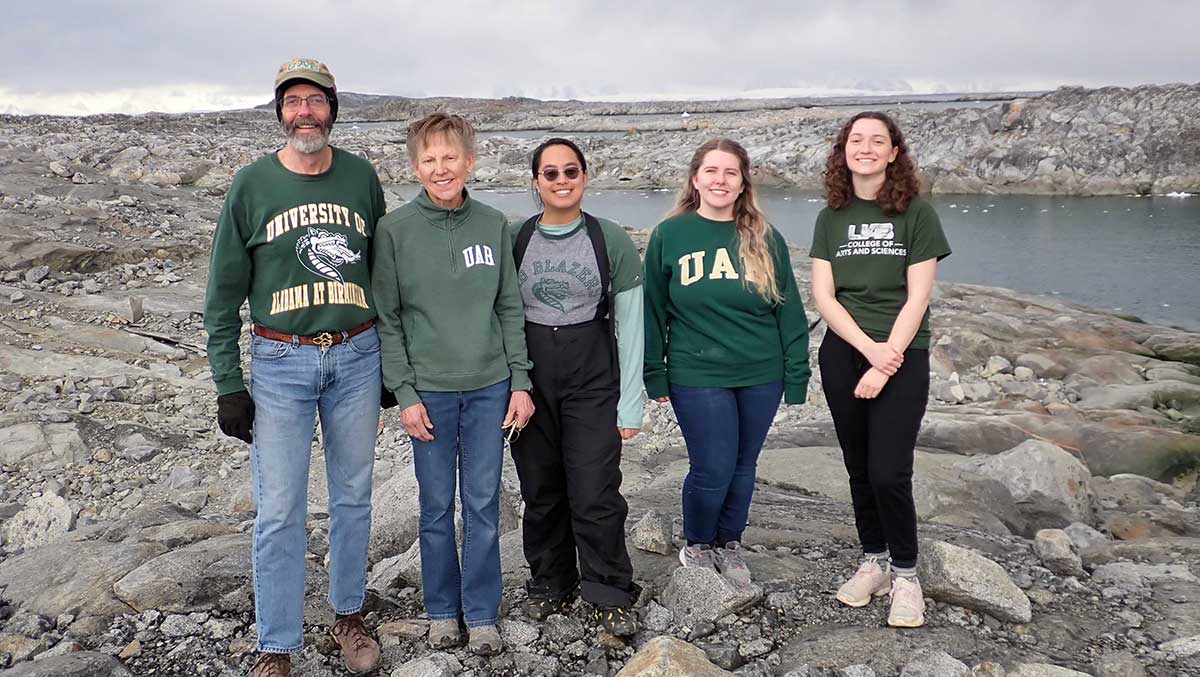
- Details
- Written by: Jami de Jesus
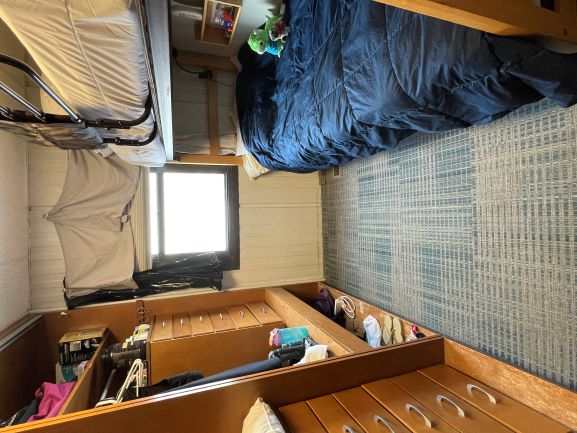 In my last post, I mentioned we typically do water chemistry in the morning and save the afternoon for dives and other activities. What are these other activities I spoke of? Read on if you’re wondering what’s the buzz and what’s a-happenin’ at Palmer.
In my last post, I mentioned we typically do water chemistry in the morning and save the afternoon for dives and other activities. What are these other activities I spoke of? Read on if you’re wondering what’s the buzz and what’s a-happenin’ at Palmer.
- Details
- Written by: Chuck Amsler
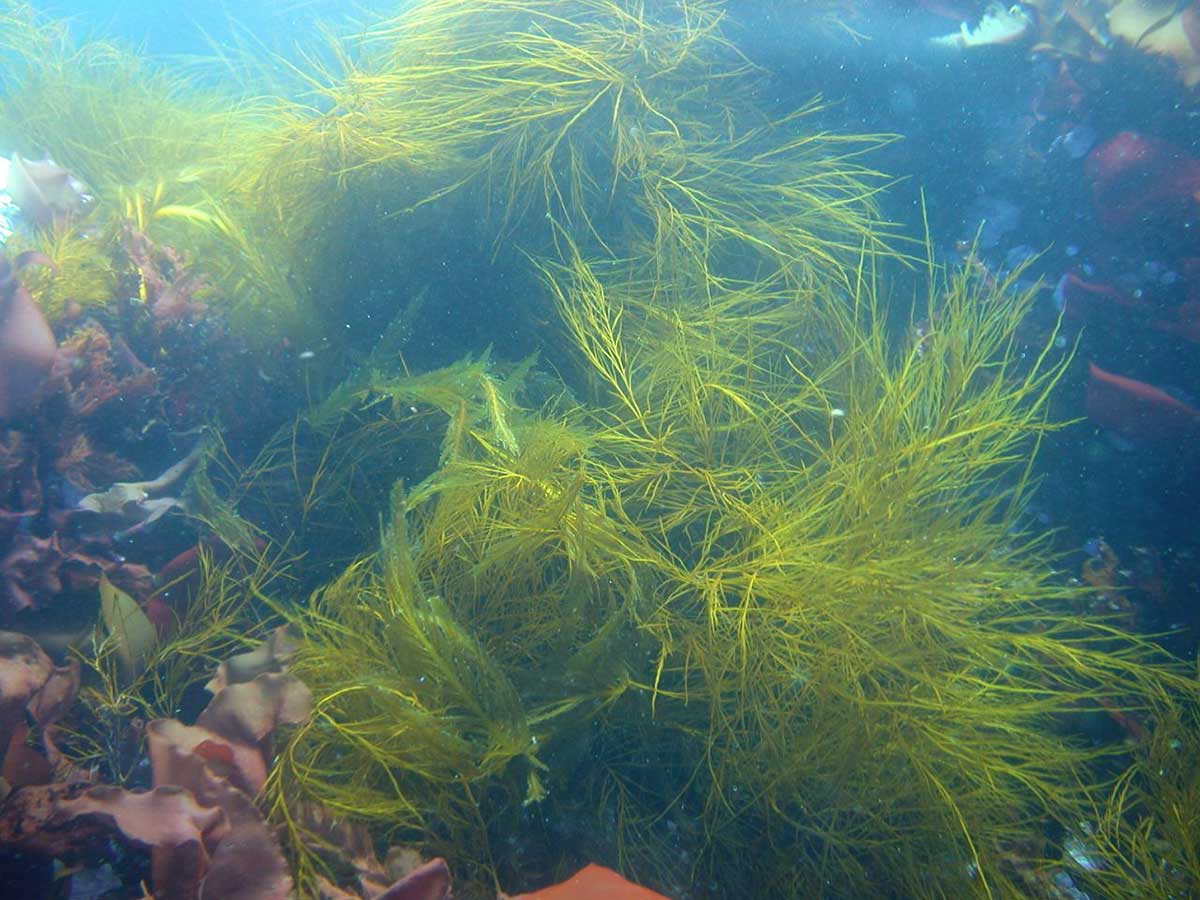 I’ve been spending my last posts talking about diving and am still are not quite yet done with the topic. But I thought that this time I’d talk a bit about what we see on those dives. I might just as well start with what we see most, which are macroalgae (or "seaweeds", which means pretty much the same thing as "macroalgae").
I’ve been spending my last posts talking about diving and am still are not quite yet done with the topic. But I thought that this time I’d talk a bit about what we see on those dives. I might just as well start with what we see most, which are macroalgae (or "seaweeds", which means pretty much the same thing as "macroalgae").
- Details
- Written by: Hannah Oswalt
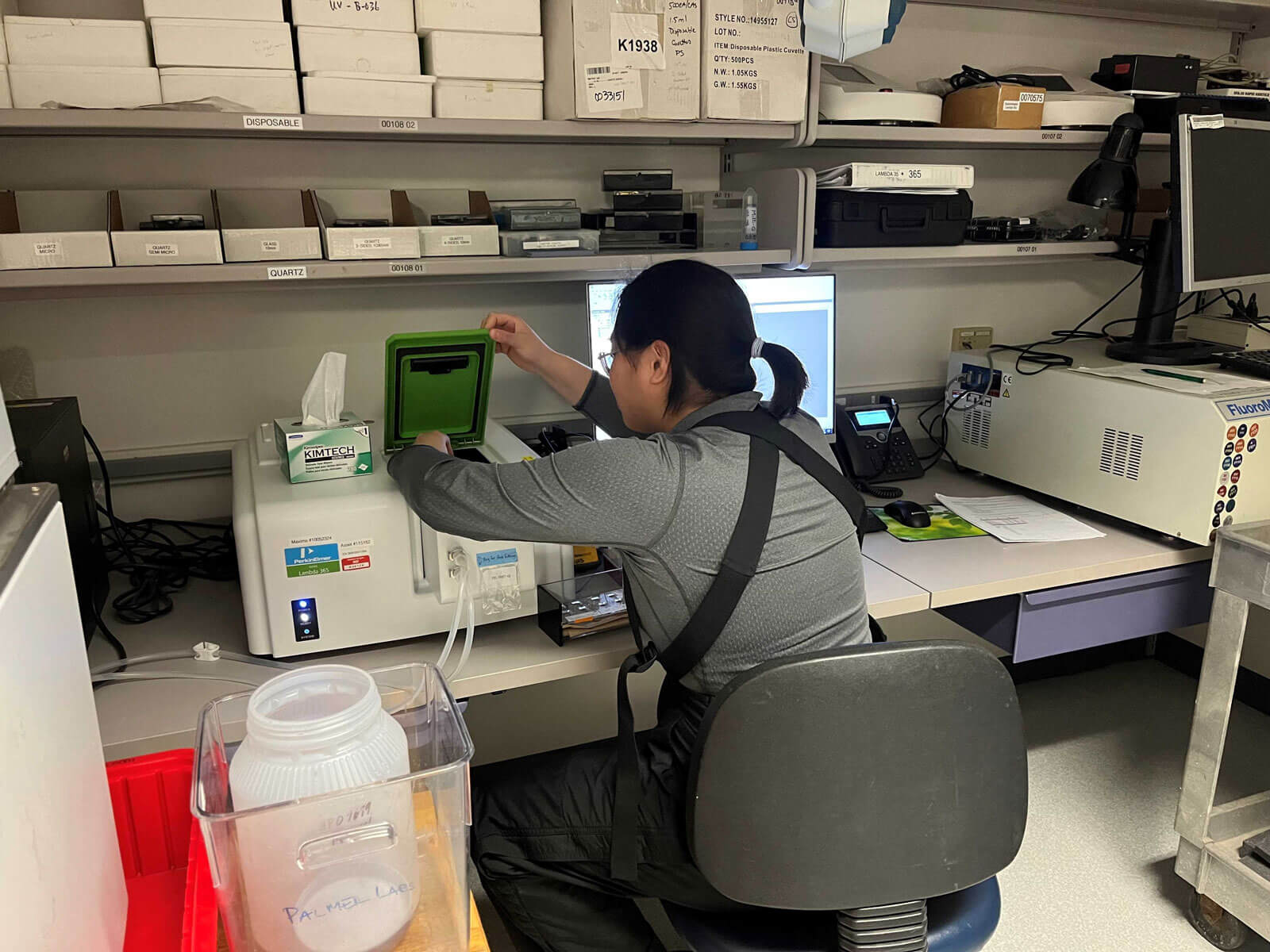 A couple of weeks ago, we were able to start our main experiment for this field season that took nearly two months to set up. While this was a super exciting accomplishment, our team’s work is far from over. There are certain tasks (like titrations, spec work, and molt collecting, oh my!) that need to be completed daily. These tasks not only help ensure that our pH treatments are correctly set, but also allow us to collect some of our data throughout the experiment. Today, I am going to walk you through a typical workday for experiment maintenance.
A couple of weeks ago, we were able to start our main experiment for this field season that took nearly two months to set up. While this was a super exciting accomplishment, our team’s work is far from over. There are certain tasks (like titrations, spec work, and molt collecting, oh my!) that need to be completed daily. These tasks not only help ensure that our pH treatments are correctly set, but also allow us to collect some of our data throughout the experiment. Today, I am going to walk you through a typical workday for experiment maintenance.
- Details
- Written by: Maggie Amsler
In my previous All Creatures entry I introduced you to two local stars – seastars that is- in the waters around Palmer Station. As members of the phylum Echinodermata, sea stars have a large and diverse extended family, as the opening image reflects.
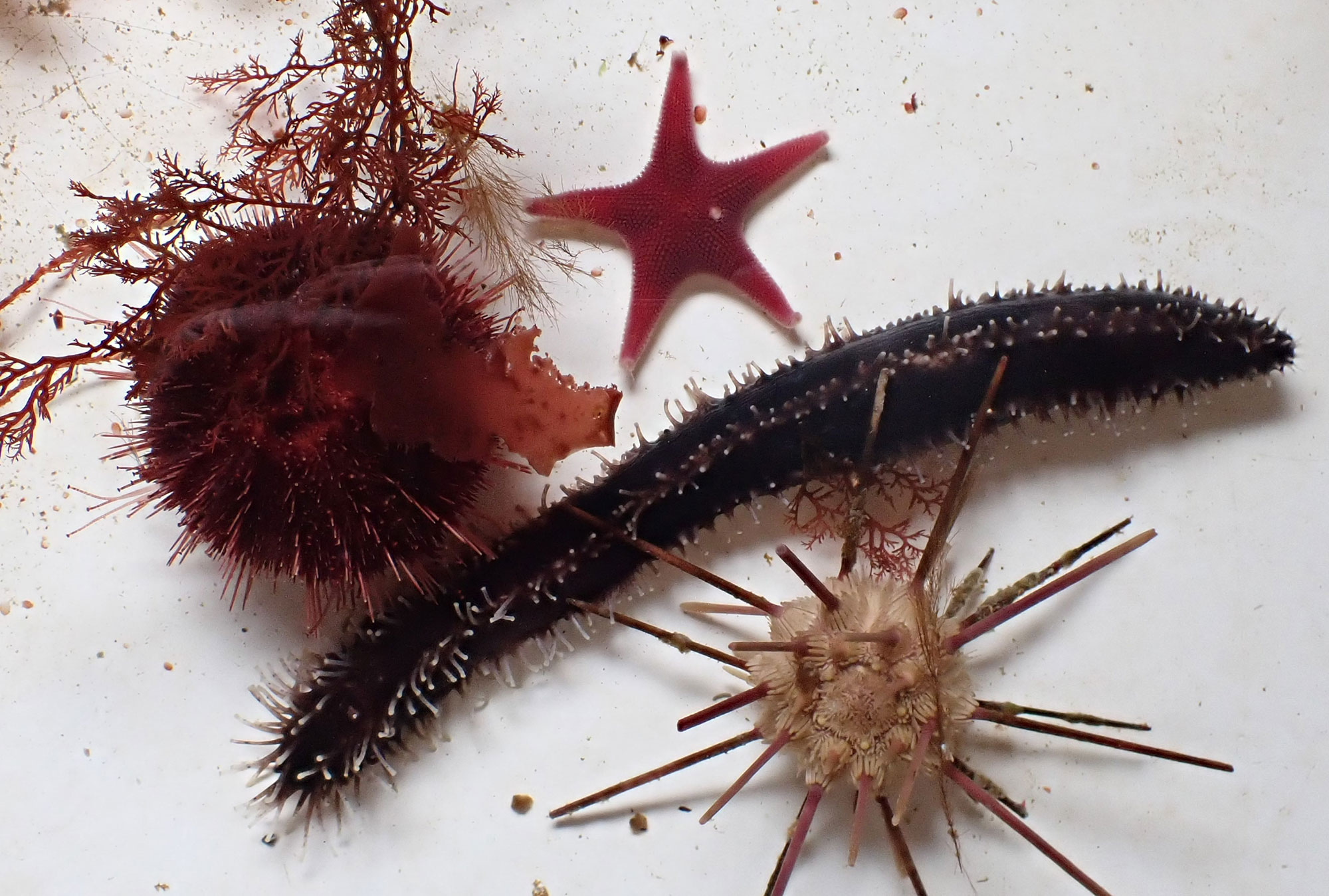
- Details
- Written by: Jami de Jesus
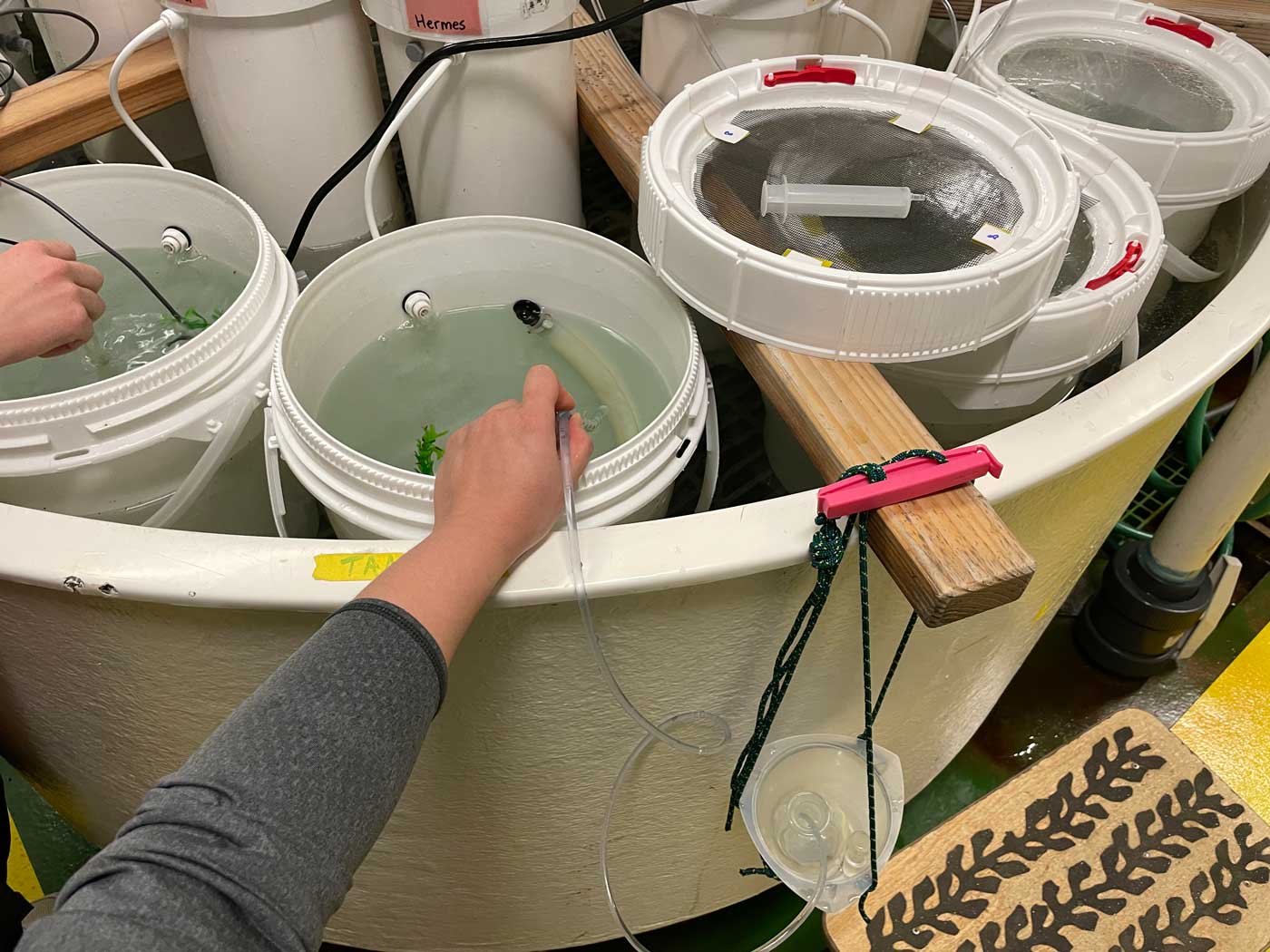 If you’ve read Addie’s latest post, then you know that the experiment is now officially underway! Read on to find out more about the water chemistry we do each day and why.
If you’ve read Addie’s latest post, then you know that the experiment is now officially underway! Read on to find out more about the water chemistry we do each day and why.
- Details
- Written by: Addie Knight
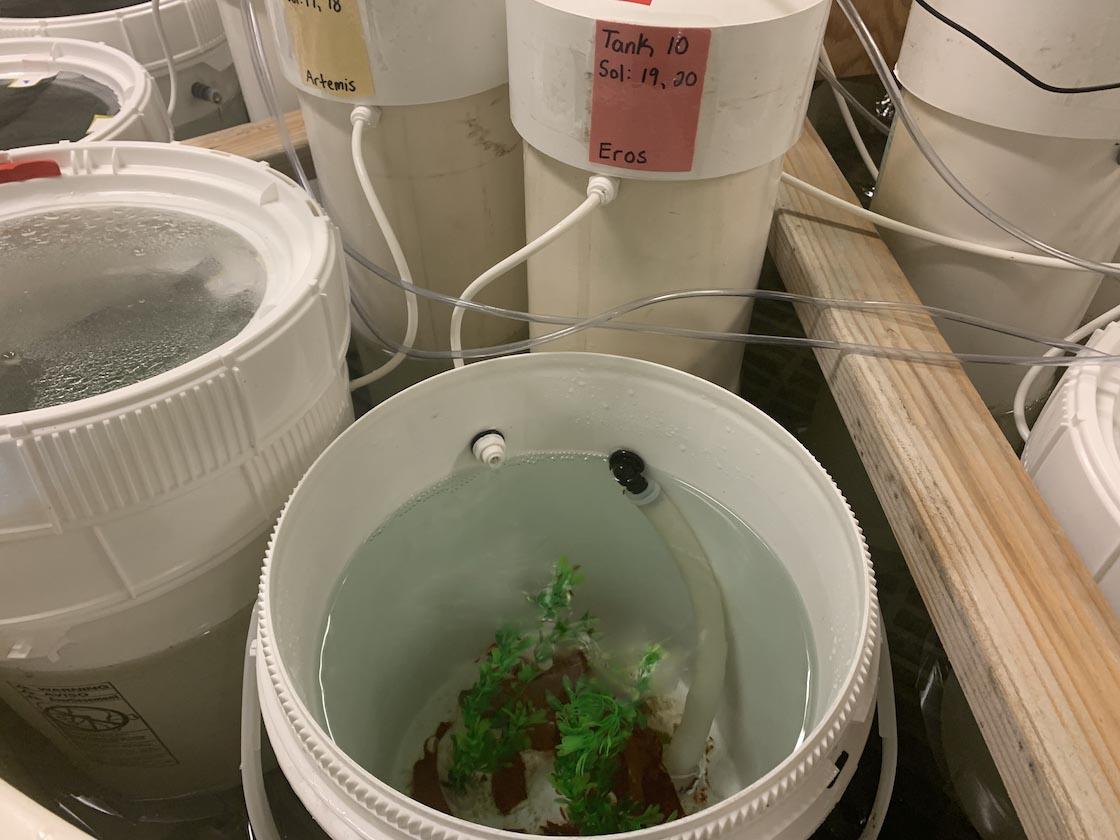 Now that we have the experiment started, as Hannah discusses in her most recent post, we’re done sorting amphipods and have moved onto doing seawater chemistry. Every morning we test six water samples from randomly selected buckets to give us more precise measures of the conditions than a pH probe by itself can provide. Each of us has our own job that we take care of, which for me is running titrations to calculate the alkalinity of the water (a measure of the sample’s ability to buffer added acids and resist changes to pH). Meanwhile, Jami is running the spectrophotometer to determine pH, and Hannah is measuring the pH of all 24 tanks with the handheld probe to make sure the ones we aren’t testing that day are still at the right level.
Now that we have the experiment started, as Hannah discusses in her most recent post, we’re done sorting amphipods and have moved onto doing seawater chemistry. Every morning we test six water samples from randomly selected buckets to give us more precise measures of the conditions than a pH probe by itself can provide. Each of us has our own job that we take care of, which for me is running titrations to calculate the alkalinity of the water (a measure of the sample’s ability to buffer added acids and resist changes to pH). Meanwhile, Jami is running the spectrophotometer to determine pH, and Hannah is measuring the pH of all 24 tanks with the handheld probe to make sure the ones we aren’t testing that day are still at the right level.
- Details
- Written by: Chuck Amsler
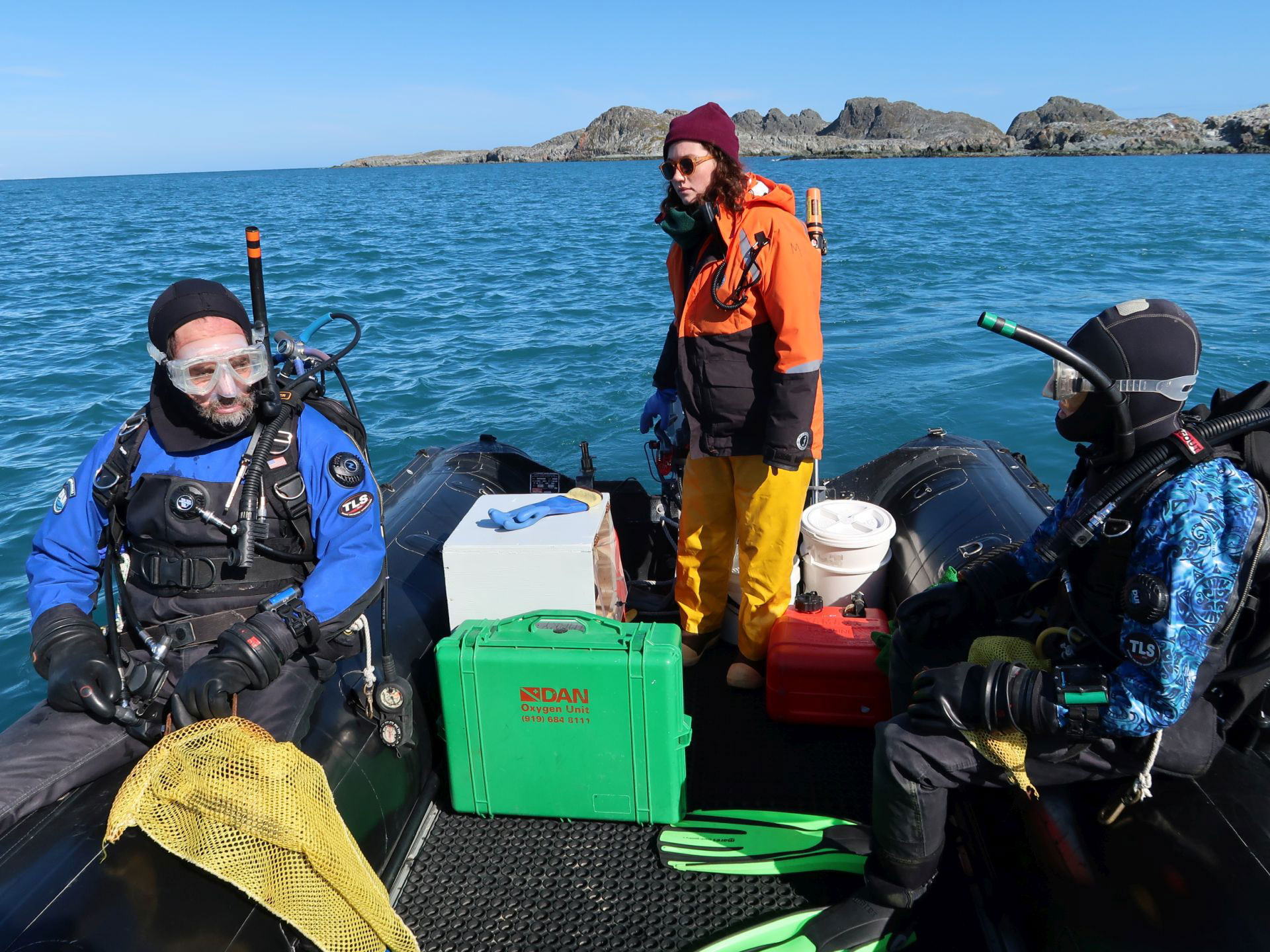 As you’ve read in other posts, we wear a lot of stuff when diving. A lot of heavy stuff. We have to get everything into the boat on station and onto us at the dive site. Then we need help getting it back into the boat at the end of the dive, and everything has to get back out of the boat on return station to make diving possible overall. That doesn’t happen without a lot of help and hard work by the dive tenders.
As you’ve read in other posts, we wear a lot of stuff when diving. A lot of heavy stuff. We have to get everything into the boat on station and onto us at the dive site. Then we need help getting it back into the boat at the end of the dive, and everything has to get back out of the boat on return station to make diving possible overall. That doesn’t happen without a lot of help and hard work by the dive tenders.
- Details
- Written by: Hannah Oswalt
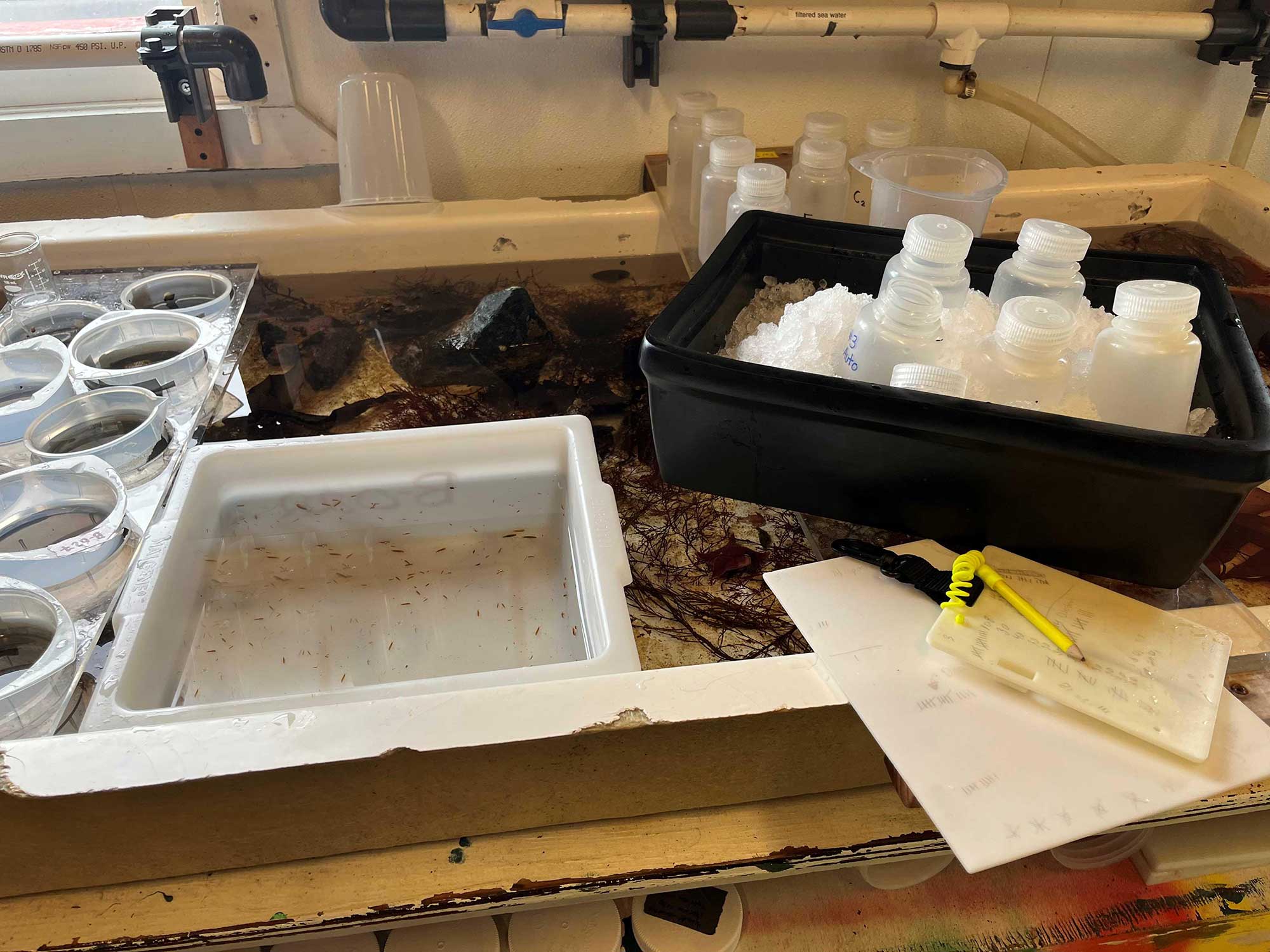
In the last several weeks, our team has discussed several of the tasks that needed to be completed before we could start our experiment: diving to collect samples, removing amphipods from algae, and sorting different amphipod species. These may seem like simple tasks, but we struggled to complete them this season.
- Details
- Written by: : Maggie Amsler
Sunday morning until 1PM is Team UAB in A’s ‘day’ off for the week. Despite the high winds the night before and again predicted for our day of leisure, the morning weather was somewhat calm and I decided a trip to the backyard was overdue. Backyard? Why shouldn’t our southern home have one? Palmer’s is the rocky area behind station before reaching the ice/snow of the glacier introduced in my first entry. The image below shows the expanse of our rocky, bouldered backyard ending at the glacier’s edge.
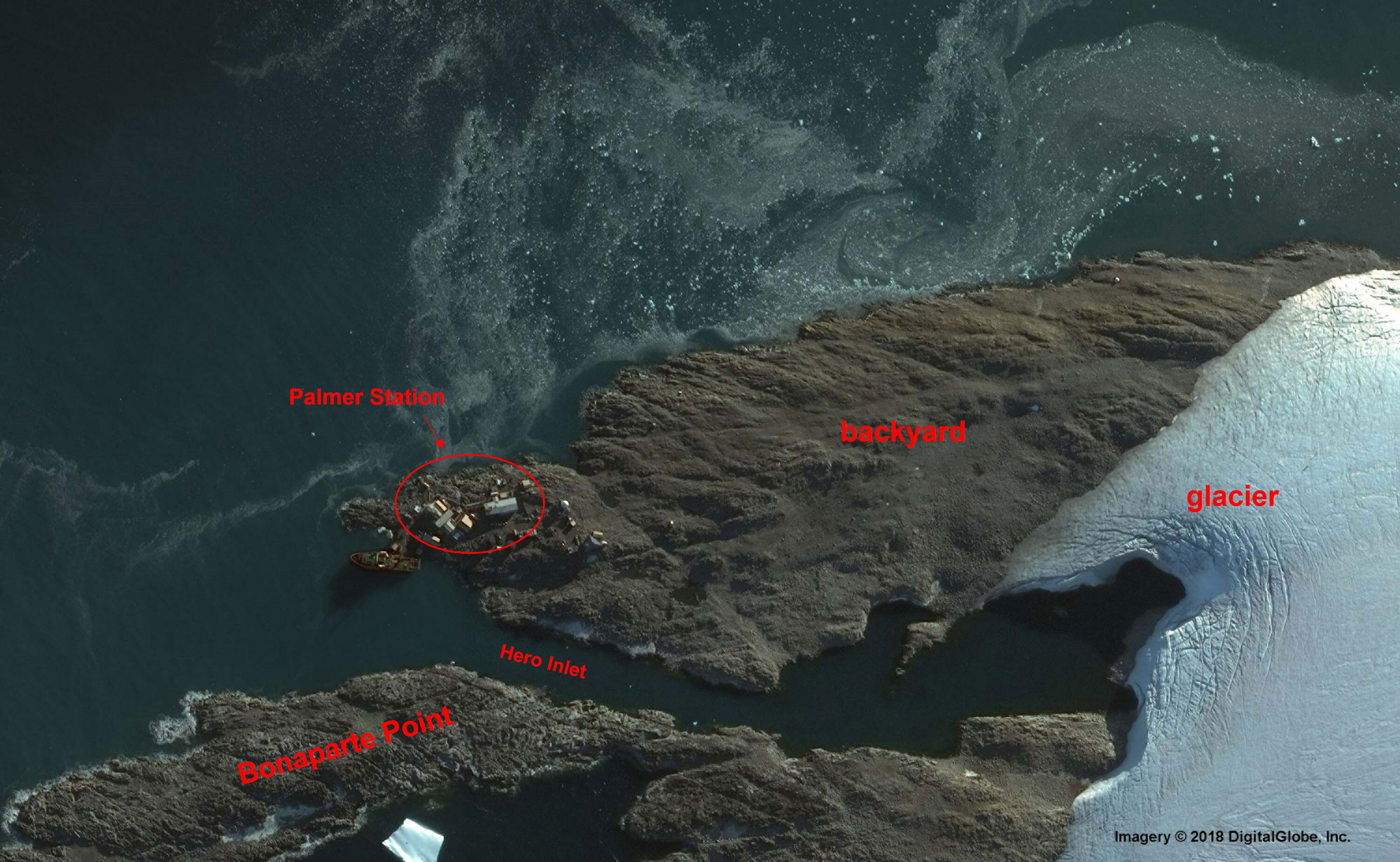
- Details
- Written by: : Jami de Jesus
The LMG left the dock around 9:15 AM on February 10. The boat was rocking quite intensely at first, so I decided I would put on my scopolamine patch that night. The patch is good for three days, and we were scheduled to reach the infamous Drake Passage sometime on the morning of the 12th.
After lunch, we mustered in the lounge for a fire drill and safety training. We boarded the impressive lifeboats and toured the labs. It was amazing to see how everything from trash receptacles to centrifuges had been secured to ensure lab safety on the ship. In the afternoon, we donned float coats, sea boots, and fisherman’s gloves to practice climbing up and down a ladder.
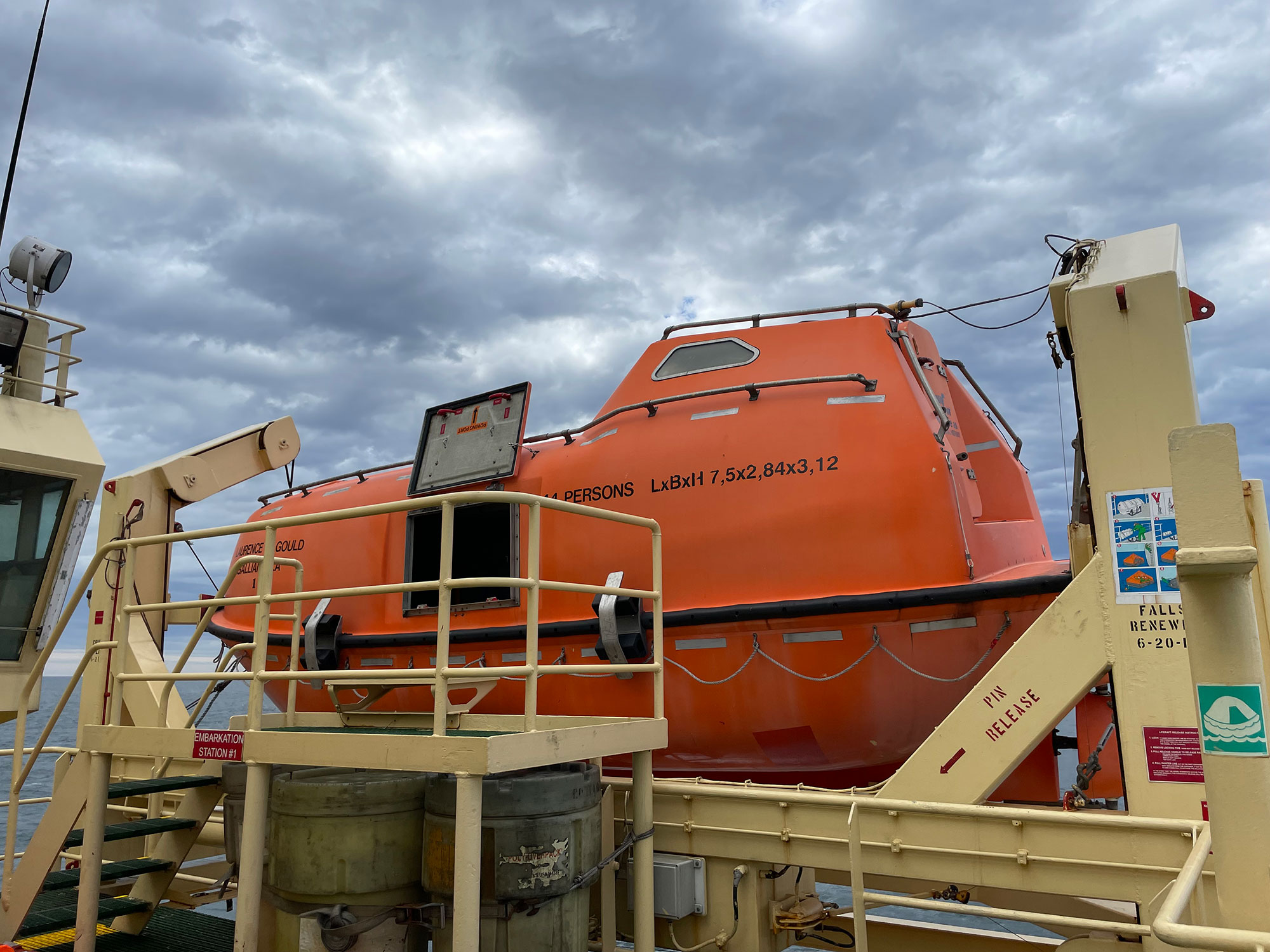
- Details
- Written by: : Jami de Jesus
After a combined 13.5 hours of flights and 10.5 hours of layovers – all the while wearing KN-95 masks – I finally arrived in Punta Arenas, Chile around 4:30 PM local time, along with my fellow LMG-bound friends, whom I had met on the way. After checking into the hotel and having dinner at the hotel restaurant, I went straight to sleep. It had been over 24 hours since I’d been able to sleep without a mask on and in a bed.

- Details
- Written by: Addie Knight
In many of our previous blog posts we have written about the main subjects of our experiment, three wonderful amphipod species Prostebbingia gracilis, Gondogeneia antarctica, and Djerboa furcipes. For simplicity we call them P. gracilis, Gondo and Djerboa, resp. As Hannah mentioned in her blog post Getting Experimental, in one of our last season’s experiment, Djerboa were found to respond better to lower pHs than P. gracilis and Gondo. Our current experiment will hopefully help us better understand the reasons for those differences. Below is a group of Gondo sorted from the other amphipods. Hannah’s post also has a nice close-up of Gondo.
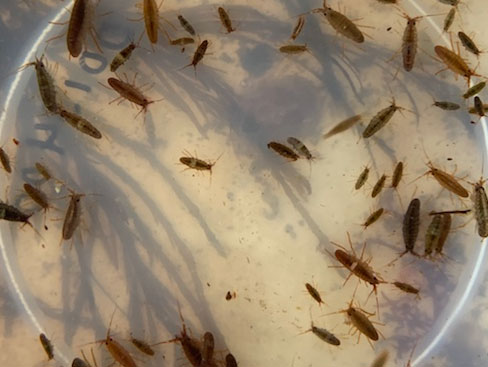
- Details
- Written by: Chuck Amsler
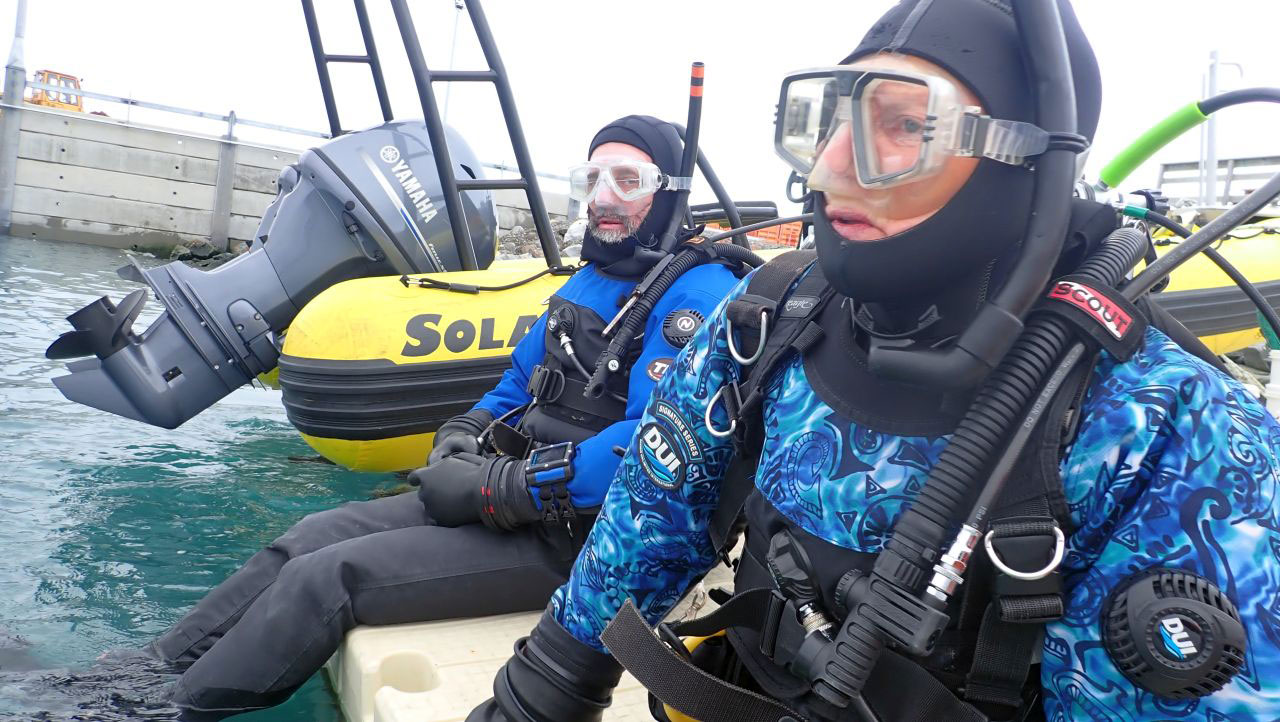
In my last post, I talked about how unusually bad weather for January had been limiting our diving activities. I also mentioned being able to dive right off the station dock sometimes when the winds are too strong to go out in boats but from a direction where the dock area is protected from the waves. The weather has gotten better, but we have been diving at the dock a lot anyway. Why you might ask??
- Details
- Written by: Hannah Oswalt
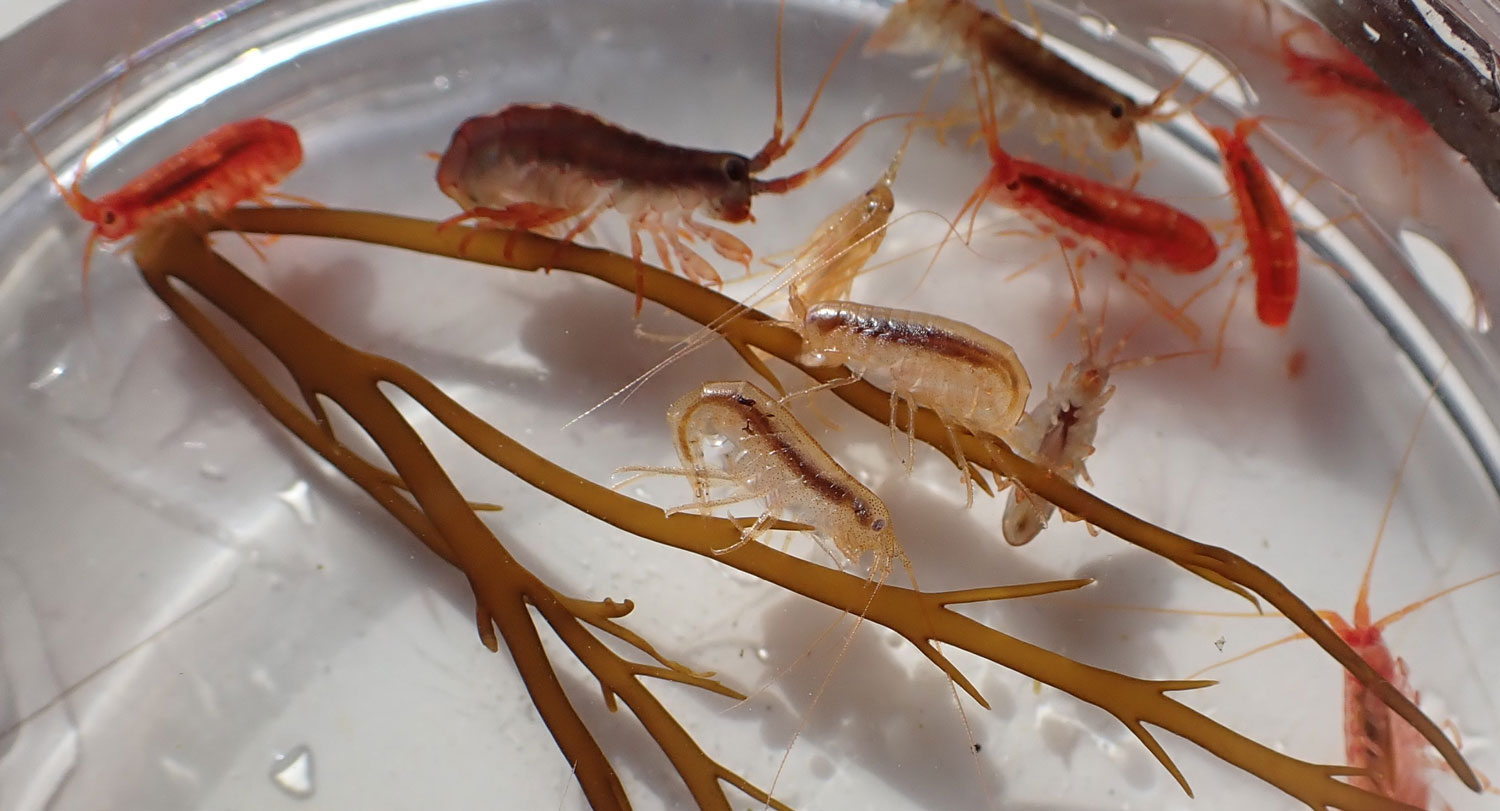 How do you get to Crustaceanland? That is the question our group is trying to answer this week as we gather amphipods for our experiment. Here on the Western Antarctic Peninsula, our study organisms can usually be found hiding amongst the large seaweeds that dominate the benthos of shallow water communities. When we want to collect amphipods, our divers will cut the base of the seaweed and gently float it into a fine mesh bag. The amphipods we want will stay on the seaweed as long as we don’t jostle the alga too much. Voilà, we have just caught some amphipods. Easy-peasy. Mission accomplished… or is it? We may have amphipods in a bag but there are still several more steps that need to be completed before we have amphipods that are usable.
How do you get to Crustaceanland? That is the question our group is trying to answer this week as we gather amphipods for our experiment. Here on the Western Antarctic Peninsula, our study organisms can usually be found hiding amongst the large seaweeds that dominate the benthos of shallow water communities. When we want to collect amphipods, our divers will cut the base of the seaweed and gently float it into a fine mesh bag. The amphipods we want will stay on the seaweed as long as we don’t jostle the alga too much. Voilà, we have just caught some amphipods. Easy-peasy. Mission accomplished… or is it? We may have amphipods in a bag but there are still several more steps that need to be completed before we have amphipods that are usable.
- Details
- Written by: Maggie Amsler
 Team UAB in Antarctica has been diving far and wide in the Palmer Station vicinity searching for algae laden with amphipods for our ocean acidification experiment. The hunt always yields algae but not always amphipods, much less the particular species and numbers desired for the ocean acidification experiment. The divers are sort of like Goldilocks looking for an alga that is not too big (to handle), not too small (yielding low amphipod abundances), but just right size (to fit in our special collecting bags and have good numbers of the amphipods of interest). As we swim about looking for that perfect alga, we often get distracted by other types of critters living on the seafloor. I’d like to introduce you to some of those cool creatures we have encountered – in particular those with many arms and many legs.
Team UAB in Antarctica has been diving far and wide in the Palmer Station vicinity searching for algae laden with amphipods for our ocean acidification experiment. The hunt always yields algae but not always amphipods, much less the particular species and numbers desired for the ocean acidification experiment. The divers are sort of like Goldilocks looking for an alga that is not too big (to handle), not too small (yielding low amphipod abundances), but just right size (to fit in our special collecting bags and have good numbers of the amphipods of interest). As we swim about looking for that perfect alga, we often get distracted by other types of critters living on the seafloor. I’d like to introduce you to some of those cool creatures we have encountered – in particular those with many arms and many legs.
- Details
- Written by: By Addie Knight
Palmer station has a maximum capacity of only 45, so everyone living here gets to know each other really well and really fast. Most evenings there’s some fun activity going on, which varies depending on who’s on station and what they’re interested in, but this season so far we have been having a scary movie series, video game competitions, card games, yoga, hiking outings and lots more. One afternoon Hannah and I plus other station folks walked up the glacier to take in the sites (see photo of us below).
